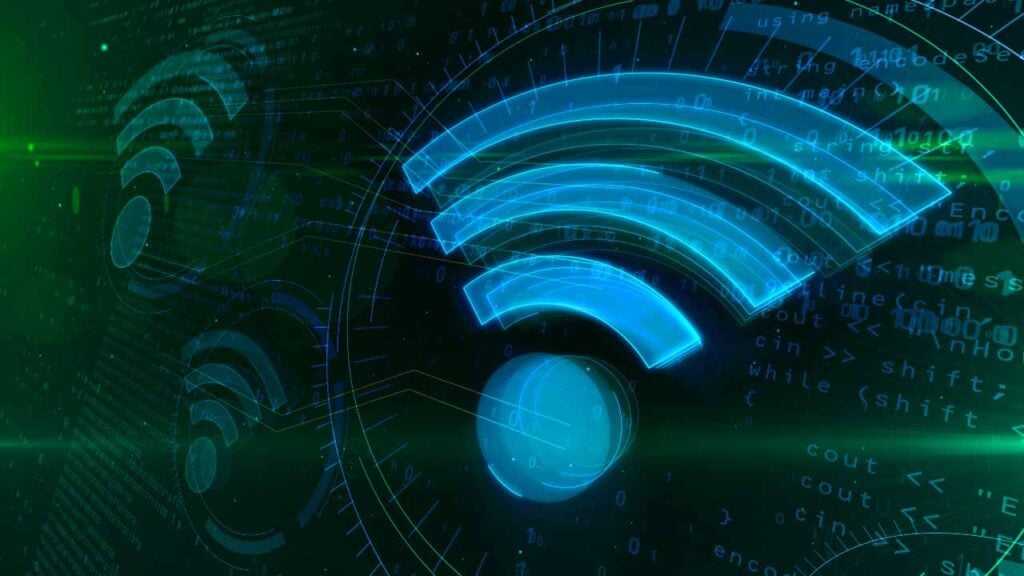MIMO technology: optimize your WiFi network
Table of Contents

The rise of teleworking has put in black and white the importance of having a good WiFi connection in our homes. Optimizing the home WiFi network is, therefore, an unavoidable decision if we want to enjoy all the digital world services. MIMO technology is a key ally to achieve this.
Connecting to the Internet via cable at home is a thing of the past. Since it is only intended for personal computers and makes movement impossible. WiFi has established itself as a hegemonic technology in the domestic environment. Through it, we can connect our laptops, but also our cell phones, smart TVs, smart plugs, and other digital devices. Today, a house can be almost entirely digitized.
WiFi is a basic necessity
As we have been acquiring objects that need to have internet access to function, WiFi has become a basic good in every home, almost at the same level as electricity or water. Are we exaggerating? Try living a week without WiFi and you will see how your life is completely disrupted.
WiFi directly affects our work environment. Without the Internet, we can’t telework, and if the connection is bad, we can’t telework either. The pandemic has highlighted that many WiFi connections are not of sufficient quality to support video calls or send large amounts of data.
If teleworking is to become a way of balancing work and personal life, the analysis of home WiFi networks and the implementation of MIMO technology will be essential.
But as we pointed out earlier, it is not only our work life that is affected by the quality of our WiFi network. Our entertainment also depends on it. Video games, streaming platforms to watch series and movies, social networks like Instagram or Tik Tok…
Our home hobbies need to have an optimal and solid internet connection throughout the home since we enjoy them in different rooms of our house.
The design of digital devices has come so far that it is no longer just work and entertainment that depend on a well-designed WiFi network. But also everyday aspects such as controlling the lights, remotely programming the washing machine, or regulating the heating.
Innovations have made our homes cozier and enabled us to better manage our electricity costs. And all this without having to be inside our home. Advances that improve our lives but that require optimized WiFi networks to be used.
What is MIMO technology?
Research and innovation in the field of wireless technology have not stopped growing in recent decades. As a result of this effort, MIMO technology was born. The words behind this acronym explain it quite well: multiple input, multiple outputs. In other words, MIMO technology uses multiple transmitters and multiple receivers to send and receive data.
In contrast to the basic WiFi network, which has only one antenna, MIMO incorporates several antennas that are located in different places. No matter how small the separation between the transmitters, the signal emitted by each transmitter will travel a different path to the receiver. These signals travel simultaneously on a single radio frequency channel.
In addition, MIMO technology allows multiple devices to be connected via a single link but using multiple signals. For example, a router and a smartphone can be connected via a link through several signals, generated by several antennas. A quantum leap that implies a qualitative improvement of the WiFi network.
The importance of diversity
MIMO technology is based on two formats:
- Spatial diversity. It is used to optimize the signal-to-noise ratio and is characterized by improved system reliability.
- Spatial multiplexing. It is used to increase the data sending capacity. To do this, it uses the different paths that the signal travels from each antenna.
By offering the receiver several versions of the same signal, the chances of a transmission failure are reduced, since this would have to affect all of them. Diversity plays a fundamental role in stabilizing a link between transmitter and receiver, improving its performance, and reducing the error rate.
Today, most routers incorporate MIMO technology. As of the 802.11n standard, they all have it. So do many of our everyday devices such as cell phones and personal computers. We can find 2X2, 3X3, or 4X4 MIMO routers. These numbers refer to the number of transmitting and receiving antennas.
In short, the antennas are the real key to MIMO. Not only because of their number or location but above all because of their intelligence. Their technological development makes it possible to manage and combine the different signals and optimize data transmission.

Taking advantage of rebounds
Every basketball fan knows how important it is to grab rebounds. Whether on defense or offense. When it comes to optimizing a WiFi network, they are also essential. One of the keys to MIMO technology is that bounces, far from creating interference or increasing noise in the signal, become an asset.
The information transmitted in each signal bounces off the different components of our homes: walls, ceilings, furniture… As each one is sent from a different place, its trajectory from the transmitter to the receiver will be different and the objects against which it bounces will also be different. Thus, the signals arrive at the receiving antenna from different angles and at different times.
Precisely, temporal diversity complements spatial diversity and allows the receiving antennas to combine data arriving via different paths and at different times.
MIMO technology also incorporates space-time block codes. This operation consists, first of all, in encoding the data by blocks before transmission. The data is then distributed to the various antennas and sent over a while. The receiving antennas decode the data and combine the different versions that have reached them to extract as much information as possible.
Therefore, this combination serves to optimize the signal reception and, with it, the operation of the WiFi throughout the home.
Transfer speed, coverage, and performance
When we think about how our Internet works, the first thing that comes to mind is data transfer speed. In the advancement and implementation of WiFi, this parameter has always been the main focus. MIMO technology increases the transfer speed by taking full advantage of the bandwidth, but its advantages are not limited to this aspect.
MIMO also allows us to extend WiFi coverage. A key aspect today. While in the past we used to use the Internet in very specific areas of the house, such as the living room or a bedroom, we now use it in all areas of our homes. As a consequence of this change in our habits, we demand that our WiFI has coverage that guarantees optimal data transmission wherever we are.
Data throughput is also improved thanks to MIMO technology. As mentioned above, this reduces noise and the possibility of a failure that leaves us without a signal. But data throughput is also increased, thanks to smart antennas and spatial and temporal diversity.
Connecting multiple devices and maintaining the security
Besides to the three advantages above, two very important issues are worth noting. The design of the WiFi network in our homes has to ensure, firstly, that the speed and data throughput are optimal, to be able to carry out day-to-day tasks such as making video calls or sending large volumes of information. And secondly, that coverage is wide and efficient. But that’s not enough. It also has to allow us to connect several devices at the same time without the service losing quality.
Likewise, several people with their own needs may live in the same house. Or even a single person using several devices that require internet at the same time. It is a reality that is already here and growing. Our homes are becoming digitized and smart. The MIMO technology allows us to optimize the WiFi network to adapt it to all the needs that may arise.
Thus, thanks to the multiplication of intelligent transmitting and receiving antennas, it is also possible to multiply the number of devices that can be optimally connected to the Internet without affecting data throughput in any of them.
All this must be achieved while taking care of the security of the devices connected to the WiFi network and of the network itself. The incorporation of more antennas and the access of a greater number of devices does not lead to an increase in vulnerabilities.
As we migrate our lives to the cloud, we must be especially careful when it comes to cybersecurity. The design of the WiFi network must take this aspect into account, protecting it from possible attacks.
Acrylic Heatmaps: analyze your network
How can we get the most out of MIMO technology? By analyzing the WiFi network with the Acrylic Heatmaps tool. This software allows you to design, analyze and detect WiFi problems.
With it, we can test how the 3X3 or 4X4 MIMO router we have is working and if its characteristics meet our needs.
To do this, Acrylic Heatmaps performs WiFi measurements and stores detailed information about the devices that configure the network. This data generates detailed coverage maps of each access point. This way we can know precisely whether our network is optimized or not.
This tool analyzes the existing WiFi infrastructure, studies the signal quality, and generates heat maps showing graphically how this quality evolves in each of the spaces. Taking into account how the space is configured and what materials it is made of.
With all this information in hand, the network can be designed to squeeze the full potential of MIMO technology, knowing how the signals from the smart antennas move around our home and selecting the best locations, taking into consideration the different devices we have.
In short, WiFi has become a basic asset in our daily lives, relevant in all vital areas. Therefore, we must have a fully optimized WiFi network that makes the most of the bandwidth and allows us to enjoy excellent traffic speed on all our devices. MIMO technology and Acrylic Heatmaps are key tools for designing a network that perfectly suits our needs.
